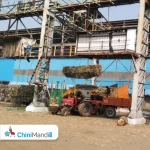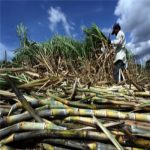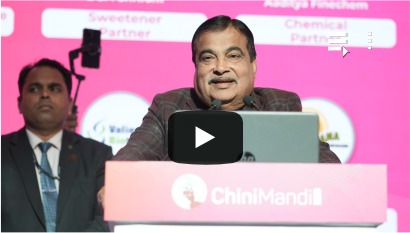For much of the last decade, agritech has revolved around the sowing season. If you could get the right seeds or fertilisers to a farmer at the right time, the thinking went, you had secured the relationship. But in my experience, loyalty is not built in the field. It is forged after the crop comes out of it.
I have seen this pattern unfold across thousands of villages. The day the harvest is completed, a farmer finds herself at the most vulnerable point in the entire season. Prices begin to fall, traders arrive with cash and conditions, and there is rarely a safe place to store even a single bag of grain. That narrow window, which may last just a few days or even a few hours, ends up determining not only her income for the season but also whether she will choose to return to you the following year.
While inputs are undeniably important, they remain a cost to the farmer. The moment the crop is cut, the entire equation shifts, and every decision she takes from that point onward becomes about income. When we are able to offer a farmer the ability to store her crop within her own village, provide her with instant liquidity against that stored produce, and connect her to a market that allows her to trade on her own terms, we are no longer just offering a service. We are entering the phase of the cycle where value is created rather than spent. And it is in this moment of value creation that trust begins to take root and endure. A farmer who sees a significantly better price because she was able to wait for the right moment to sell does not think of Arya.ag as a vendor. She begins to see us as a partner in her income.
A clear example of this shift can be seen in the story of Ranjeet Mahadeo Raut from Maharashtra. In 2018, he established his Farmer Producer Organisation with the goal of helping local farmers receive better prices for their produce without deductions or hidden costs. At that time, the FPO’s turnover was ₹68 lakhs. After partnering with Arya.ag to facilitate near-farm storage and access 70 percent funding through warehouse receipt finance, the turnover rose to ₹2.25 crores. What changed was not just the infrastructure but the entire experience of post-harvest handling. With timely payments, improved price realisation, and complete transparency in the process, trust was not only built but also sustained. Today, over 510 shareholders benefit from this model, and their story is a testament to the fact that trust, when built in the post-harvest layer, creates a foundation for long-term growth. This shift, from incurring costs during sowing to realising income after harvest, is what separates a one-time transaction from a meaningful relationship that spans years.
I still remember a woman farmer from eastern Uttar Pradesh who once told us, with quiet pride, “For the first time, my crop feels like money in my hand before I sell it.” She had not made a drastic change. All she had done was store her grain in a warehouse located near her village and use the warehouse receipt to access a short-term loan. And this is precisely the nature of post-harvest services. Their impact is not theoretical or deferred. It is immediate, and it is tangible. A digital receipt that marks her stock as an asset, a payment that reflects in her account the same day she completes a structured trade, a selling price that is fifteen to thirty percent higher simply because she chose not to sell during the harvest glut, these are real outcomes, not assumptions or expectations. And each of these outcomes reinforces her trust in the system and in the partner that enabled it.
When we consider the input cycle, it is clear that while the benefits are valuable, they often remain abstract. A better seed or a more effective fertilizer leads to a potential improvement in yield, but that improvement is subject to so many variables that the return is never guaranteed. On the other hand, the impact of the post-harvest cycle is not only certain but also immediate. It is no surprise, then, that within our own datasets, we find that farmers who use Arya.ag for storage and finance are far more likely to return and continue engaging with us compared to those who interact only through the commerce layer.
And this is not limited to the farmer alone. When a crop is stored at the farmgate, it becomes more than just a physical product. For a bank, it becomes collateral. For a buyer, it represents a reliable and assured supply. For an aggregator, it becomes a consistent volume. One stored tonne of produce, when digitised and brought into the formal ecosystem, can facilitate three or four simultaneous transactions across the entire value chain. This is precisely why the post-harvest layer must not be viewed as a functional service. It is, in fact, the very foundation of a rural commerce network. It is the layer where finance, trade, logistics, and above all, trust, converge around the farmer’s grain bag.
For entrepreneurs and investors who are seeking to build platforms that endure, this should not be seen as a minor operational detail but rather as a strategic priority. The post-harvest layer is where farmer relationships are formed and strengthened, where multiple revenue streams begin to align; whether through storage fees, embedded financing, or commerce margins. And because every crop that is stored represents an actual, verified, and liquid asset, the risk is inherently lower than in input credit models, which depend on assumptions about future production.
The first wave of agritech in India was understandably focused on inputs. Improving access to better seeds and fertilisers was a necessary and important step. But that phase was, in many ways, transactional. What lies ahead is a fundamentally different challenge. The next wave will be shaped by infrastructure that gives farmers the ability to hold, finance, and sell their produce on terms that work for them. Those who are able to earn a farmer’s trust in that fragile moment just after harvest will find themselves at the centre of long-term relationships, not just for one season, but across many.
At Arya.ag, we often say that farmer stickiness is not built at the time of purchase. It is built at the point of sale. In that quiet moment after the harvest is complete, when the farmer chooses not to sell under pressure, when she sees that her grain can be converted into liquidity without needing to leave her village, when the income she earns reflects the true value of her work, that is when loyalty begins to take shape. And this is more than just a shift in a business model. It is a shift in the way we see agriculture. For too long, the focus has remained squarely on production, on what happens in the field. But if India is to unlock meaningful value for its farmers and for the agri-economy as a whole, we need to recognise that the centre of gravity must move to what happens after the harvest.
After having witnessed enough seasons across the country, I can say this with clarity: the field may be where the crop is grown, but the warehouse at the edge of that field is where the relationship grows. And over time, it is that relationship, rooted in trust and income, that will determine which platforms endure and which ones fade away.
(Disclaimer: The views and opinions expressed in the article by Ritesh Raman, Chief Business Officer, Arya.ag are solely his own.)

















